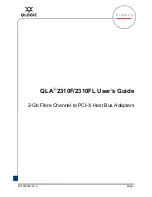
Fabric OS 6.2 administrator guide
99
3
Configuring standard security features
This chapter provides information and procedures for configuring standard Fabric OS security features such
as protocol and certificate management.
IMPORTANT:
Secure Fabric OS is no longer supported in Fabric OS 6.x. However, all features of Secure
Fabric OS are included in the base Fabric OS 6.x.
Security Protocols
Security protocols provide endpoint authentication and communications privacy using cryptography.
Typically, you are authenticated to the switch while the switch remains unauthenticated to you. This means
that you can be sure with you are communicating with. The next level of security, in which both ends of the
conversation are sure with whom they are communicating, is known as two-factor authentication.
Two-factor authentication requires public key infrastructure (PKI) deployment to clients.
Fabric OS supports the secure protocols shown in
Table 16
.
Table 16
Secure protocol support
Protocol
Description
HTTPS
A Uniform Resource Identifier scheme used to indicate a secure HTTP
connection. Web Tools supports the use of hypertext transfer protocol over
secure socket layer (HTTPS).
LDAPS
Lightweight Directory Access Protocol (LDAP) over SSL uses a certificate
authority (CA). By default, LDAP traffic is transmitted unsecured. You can
make LDAP traffic confidential and secure by using Secure Sockets Layer (SSL)
/ Transport Layer Security (TLS) technology in conjunction with LDAP.
SCP
Secure Copy (SCP) is a means of securely transferring computer files between
a local and a remote host or between two remote hosts, using the Secure
Shell (SSH) protocol. Configuration upload and download support the use of
SCP.
SNMP
Supports SNMPv1, 2, and 3. SNMP is used in network management systems
to monitor network-attached devices for conditions that warrant
administrative attention.
SSH
A network protocol that allows data to be exchanged over a secure channel
between two computers. Encryption provides confidentiality and integrity of
data. SSH uses public-key cryptography to authenticate the remote computer
and allow the remote computer to authenticate the user, if necessary.
SSL
Supports SSLv3, 128-bit encryption by default. Fabric OS uses secure socket
layer (SSL) to support HTTPS. A certificate must be generated and installed on
each switch to enable SSL.
Содержание A7533A - Brocade 4Gb SAN Switch Base
Страница 1: ...HP StorageWorks Fabric OS 6 2 administrator guide Part number 5697 0016 Edition May 2009 ...
Страница 24: ...24 ...
Страница 99: ...Fabric OS 6 2 administrator guide 99 ...
Страница 100: ...100 Managing user accounts ...
Страница 118: ...116 Configuring standard security features ...
Страница 164: ...162 Configuring advanced security features ...
Страница 234: ...232 Installing and maintaining firmware ...
Страница 268: ...266 Administering advanced zoning ...
Страница 284: ...282 Configuring Enterprise class platforms ...
Страница 292: ...290 Routing traffic ...
Страница 294: ...292 Interoperability for merged SANs ...
Страница 302: ...300 Configuring the Distributed Management Server ...
Страница 334: ...332 iSCSI gateway service ...
Страница 340: ...338 Administering NPIV ...
Страница 407: ...Fabric OS 6 2 administrator guide 405 ...
Страница 408: ...406 Using the FC FC routing service ...
Страница 438: ...434 Administering extended fabrics ...
Страница 460: ...456 Administering ISL trunking ...
Страница 498: ...494 Configuring and monitoring FCIP extension services 556200 Bps 30s avg 491394 Bps lifetime avg ...
Страница 516: ...512 FICON fabrics ...
Страница 526: ...522 Configuring and monitoring FICON Extension Services ...
Страница 540: ...536 Configuring the PID format ...
Страница 544: ...540 Understanding legacy password behavior ...
Страница 546: ...542 Mixed fabric configurations for non merge SANs ...
Страница 550: ...546 Migrating from an MP Router to a 400 MP Router ...
Страница 558: ...554 Inband Management ...
Страница 572: ...568 ...















































